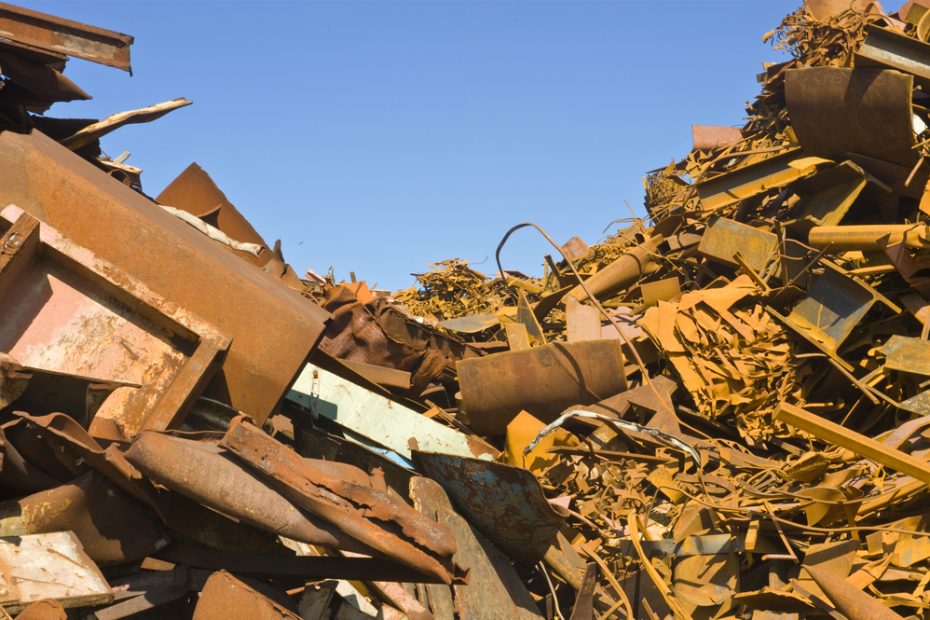Ferrous scrap is a key resource
Ferrous scrap is the term used to describe the recycled steel that is used as an input for steel production. Steel is one of the most widely used materials in the world, with applications ranging from construction and infrastructure to automotive and aerospace. Steel is also one of the most recyclable materials, as it can be melted down and reused indefinitely without losing its properties.
However, steel production is also one of the most energy-intensive and carbon-emitting industries, accounting for about 7% of global greenhouse gas emissions. As the world transitions to a low-carbon economy, the steel industry faces the challenge of reducing its environmental footprint while meeting the growing demand for steel.
One of the key solutions to this challenge is to increase the use of ferrous scrap in steelmaking. Ferrous scrap has several advantages over other raw materials, such as iron ore and coal, that are traditionally used in the primary steelmaking process. These advantages include:
- Lower carbon emissions: According to Worldsteel, every tonne of scrap used for steel production avoids the emission of 1.5 tonnes of CO2 and the consumption of 1.4 tonnes of iron ore, 740kg of coal and 120kg of limestone. Scrap-based steelmaking uses electric arc furnaces (EAFs) that run on electricity, which can be generated from renewable sources. By contrast, primary steelmaking uses blast furnaces (BFs) that rely on coking coal to reduce iron ore, resulting in higher emissions.
- Resource efficiency: Ferrous scrap is a valuable resource that can be recovered from various sources, such as end-of-life vehicles, appliances, construction and demolition waste, and industrial scrap. Using ferrous scrap reduces the need for mining new raw materials, which can have negative impacts on land use, biodiversity and water quality. Ferrous scrap also helps to establish a circular economy, where materials are kept in use for as long as possible and waste is minimized.
- Cost competitiveness: Ferrous scrap can offer cost savings for steel producers, especially when the prices of iron ore and coal are high or volatile. Ferrous scrap prices are influenced by supply and demand factors, such as scrap availability, steel demand, trade policies and exchange rates. Ferrous scrap can also reduce energy costs, as EAFs require less energy than BFs to produce steel.
Growing need of Ferrous Scrap
Given these benefits, it is not surprising that ferrous scrap is emerging as a key strategic raw material for the steel industry and beyond. According to ING Bank N.V., global ferrous scrap consumption in steel production is set to rise from 30% today to 50% by 2050, as more countries adopt policies and technologies to decarbonize their steel sectors.
However, ferrous scrap is also facing some challenges and uncertainties that could affect its availability and quality in the future. These include:
- Export restrictions: Some countries have imposed or are considering imposing export bans or tariffs on ferrous scrap, either to protect their domestic steel industries or to meet their net-zero goals. For example, Russia has banned ferrous scrap exports until June 2024, while Turkey has imposed a 15% tariff on ferrous scrap imports from non-EU countries. These measures could create supply shortages or price distortions in the global ferrous scrap market, affecting both exporters and importers.
- Quality issues: Ferrous scrap quality can vary depending on its source, composition and contamination level. Some types of ferrous scrap may contain impurities or hazardous substances, such as copper, zinc or lead, that can affect the quality and performance of the final steel product. Moreover, some types of ferrous scrap may not be suitable for certain steel grades or applications, such as high-strength or stainless steel. Therefore, ferrous scrap quality needs to be monitored and controlled throughout the recycling process, which can increase costs and complexity.
- Competition from other technologies: Ferrous scrap is not the only option for low-carbon steel production. There are also alternative technologies that use natural gas or hydrogen instead of coal to reduce iron ore, such as direct reduced iron (DRI) or hydrogen-based ironmaking. These technologies have lower emissions than BF-based steelmaking but higher emissions than EAF-based steelmaking using green electricity. However, they could become more competitive in the future if natural gas or hydrogen prices decrease or if carbon prices increase.
The Environment and Ferrous Scrap
In conclusion, ferrous scrap is a strategic raw material that can help the steel industry reduce its environmental impact and improve its resource efficiency and cost competitiveness. However, ferrous scrap also faces some challenges and uncertainties that require attention and action from policymakers, industry players and consumers. To ensure a sustainable supply and use of ferrous scrap, there is a need for:
- A supportive policy framework that promotes fair trade, quality standards and innovation in the ferrous scrap sector, while avoiding protectionist measures that could disrupt the global market.
- A collaborative approach that involves cooperation and coordination among different stakeholders, such as steel producers, scrap collectors, recyclers, traders and end-users, to optimize the value chain and ensure quality and traceability of ferrous scrap.
- A consumer awareness campaign that educates and encourages consumers to choose steel products made from recycled materials and to dispose of their steel waste properly, to increase the availability and quality of ferrous scrap.
By addressing these issues, ferrous scrap can play a vital role in achieving a low-carbon and circular economy for the steel industry and beyond.

